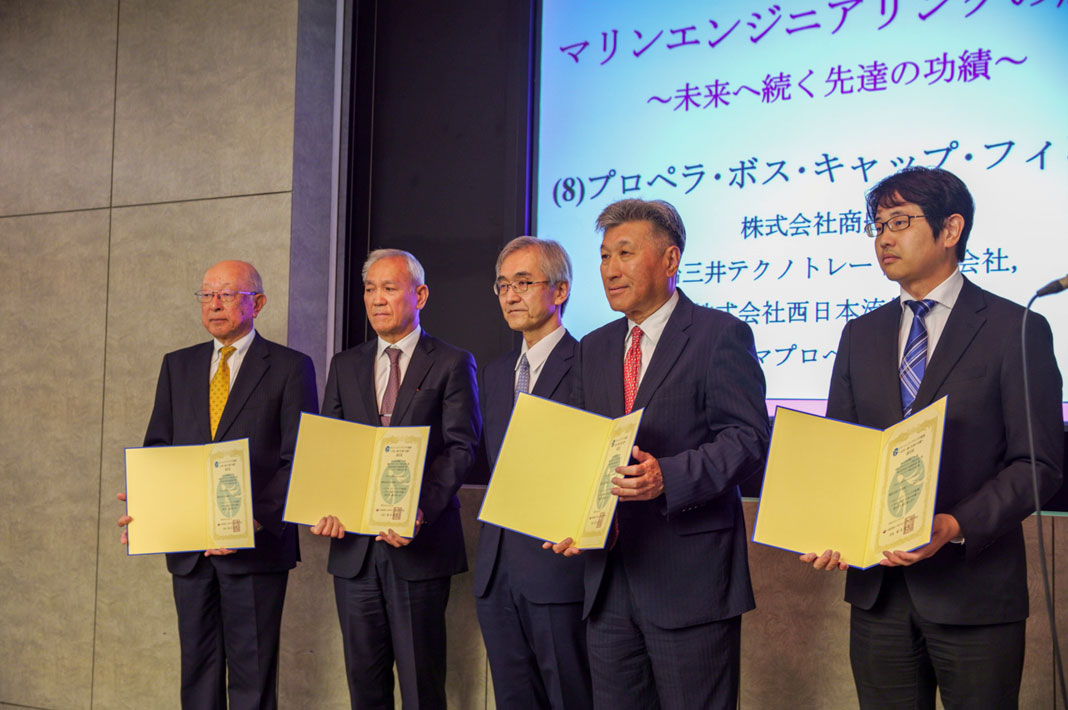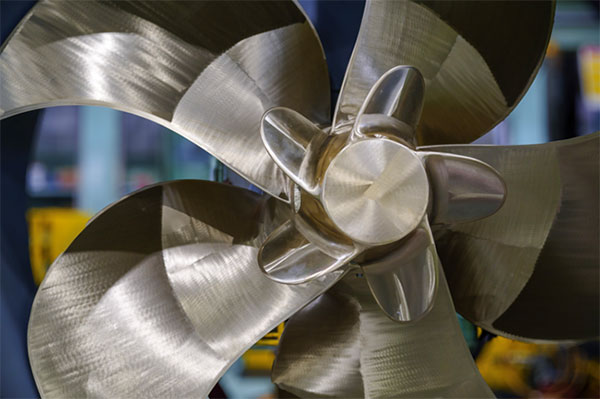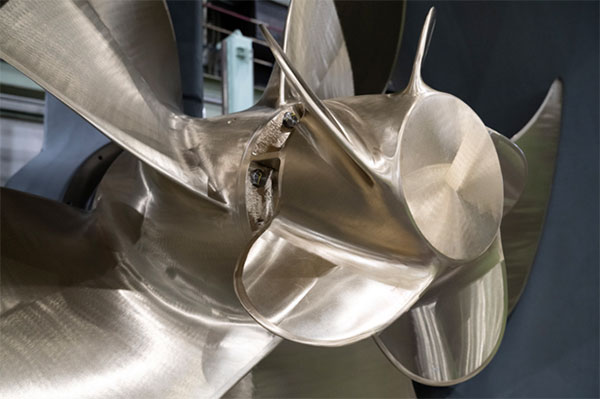- JP
- EN
Japan Institute of Marine Engineering Honored "Achievement of Predecessors for the Future" to Guinness World Record-recognized, Energy-Saving Device 'PBCF (Propeller Boss Cap Fins)'
June 04, 2024
TOKYO-Mitsui O.S.K. Lines, Ltd. (MOL; President & CEO: Takeshi Hashimoto) today announced that Propeller Boss Cap Fins (PBCF), an energy-saving device attached to the propeller cap of a vessel, sold by MOL Group company MOL Techno-Trade, Ltd. (President: Yoshikazu Kawagoe; Headquarters: Chiyoda-ku, Tokyo), has been recognized for its pioneering role in technologies that contribute to the decarbonization of the shipping industry, in the past and the future. PBCF earned certification under "Marine Engineering's Wake - Achievements of Predecessors for the Future" from the Japan Institute of Marine Engineering, one of the nation's three major ship- and ocean-related societies (Note 1).



PBCF, co-developed by MOL, West Japan Fluid Engineering Laboratory Co., Ltd., and Nakashima Propeller Co., Ltd. (called Mikado Propeller Co., Ltd. at the time) in 1986, is an energy-saving device that reduces a vessel's fuel consumption by an average of 3-5%. PBCF improves propulsion efficiency by eliminating the hub vortex generated behind the propeller. The device also reduces CO2 emissions by more than 9,000 tons annually when installed on a large containership. In December 2021, PBCF was certified as the "Best-selling Energy-Saving Ship Appendage Brand (Cumulative)," by Guinness World Records™ (Note 2), and as of May 31, 2024, the number of PBCF-equipped vessels reached 4,178. It is calculated that PBCF has contributed to a cumulative reduction of about 67 million tons of CO2 emissions to date. Even now, 37 years after its development and commercialization, PBCF use continues to grow as its value is reaffirmed with the rise in environmental awareness.
MOL has established the "MOL Group Environmental Vision 2.2" and has set the target of achieving net zero greenhouse gas (GHG) emissions by 2050. This release is in line with the strategy to achieve this target, "introduction of further energy-saving technologies." The MOL Group will achieve sustainable net zero GHG emissions and contribute to the realization of a low-carbon, decarbonized society, with concerted effort throughout the group.
(Note 1) Please refer to The Japan Institute of Marine Engineering, "The Wake of Marine Engineering", "The 2nd 'The Wake of Marine Engineering" certification results".
(Note 2) Please refer to the December 24, 2021, press release: A GUINNESS WORLD RECORDS™ title for Best-selling Energy-Saving Ship Appendage Brand (Cumulative) was certified for Propeller Boss Cap Fins (PBCF)
MOL Group 5 Sustainability Issues
MOL Group identifies "Sustainability Issues" (Materiality) as our key issues for sustainable growth with society through realization of the Group Vision.
We anticipate this initiative to contribute especially to the realization of "Environment -Conservation for Marine and global environment-" and "Innovation -Innovation for development in marine technology-".

